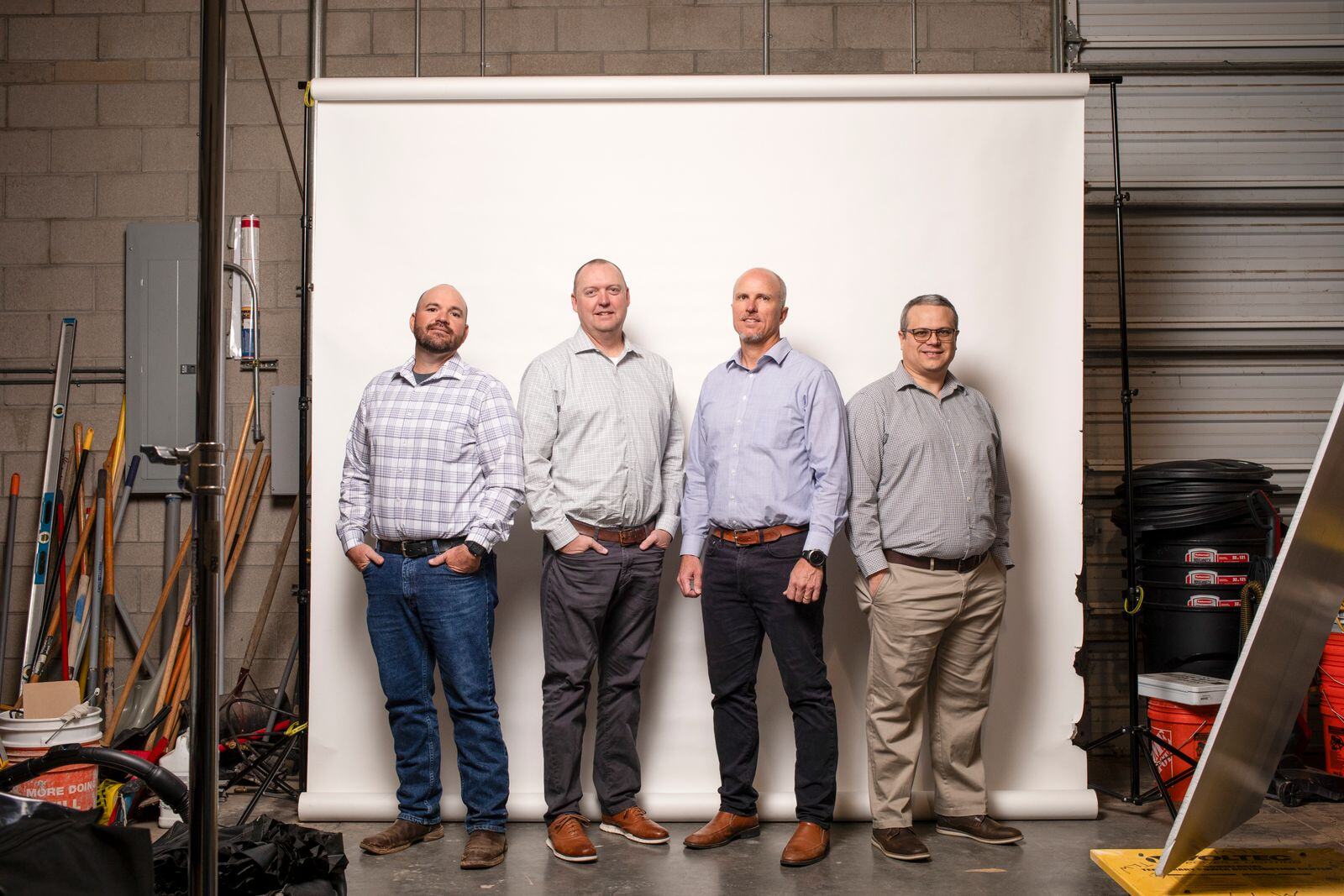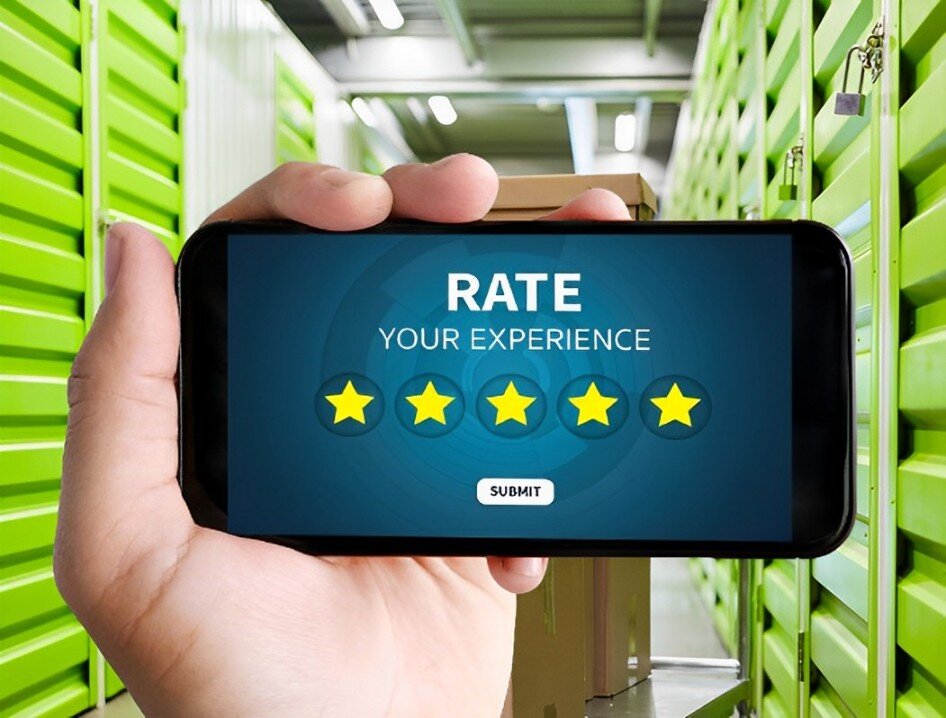Look Who’s Talking – Michael Baillargeon, senior vice president of operations at Store Space
By Erica Shatzer
September is here. Autumn is upon us, but unlike the leaves on the trees, concerns about COVID-19 have not yet withered. Masks are still required in public in many areas across the nation. Social distancing and proper sanitation remain priorities for most businesses, and contactless transactions continue to be the preferred option of many customers.
Unfortunately, as a result of these stringent precautions, some of the self-storage industry’s customary pre-pandemic practices have been put on hold, such as handshakes to welcome visitors or close sales, casual conversations with customers over cups of coffee, impromptu business-to-business visits to nearby companies and apartment complexes, and self-serve goodies for tenants in the office.
Though no one knows for certain when those more pleasant aspects of customer service and marketing will resume, Michael Baillargeon, senior vice president of operations at Store Space, which operates and manages self-storage facilities throughout 15 states, is positive of one thing: Technology will become a permanent business component.
Embracing Technology
There’s no denying that, with the exception of PPE (personal protection equipment) and disinfectants/sanitizers, technology that enables employees, including self-storage managers, to work remotely has been a lifesaver for businesses. Indeed, the pandemic would be much more difficult to navigate without technology.
Though the self-storage industry as a whole had been slower than other industries to adopt new technologies, the guidelines put into place to minimize the spread of COVID-19 thrust many operators in to the 21st century. Obviously, those who already had some technologies up and running before the onset of the pandemic were at a clear advantage.
“Technology has always been an important asset at Store Space,” Baillargeon says. “We equip our store managers with hand-held point-of-sale tablets, allowing them to conduct business anywhere on the grounds, including from six feet apart.”
Baillargeon goes on to mention the other tech solutions offered at Store Space facilities provide convenient payment solutions for tenants and enable both customers and managers to adhere to the social distancing guideline.
“We also have in-store self-service kiosks so customers can select and rent a unit with minimal assistance from the store managers,” he says. “Most importantly, we were able to leverage our proprietary Storage360 platform to quickly implement our Touchless Rental program. And customers have access to MyStorage Portal to pay their bill online or otherwise manage their account from their computer or smartphone.”
Similar to disaster preparedness, self-storage operators with proactive emergency plans tend to fair better than those who wait till tragedy strikes to react.
“Because we have invested so heavily in becoming a technology leader, Store Space was able to bring its Touchless Rental solution, and the messaging around it, to the marketplace very rapidly,” says Baillargeon. “So, while other storage companies may have been slower to implement their plans, we were able to show growth in the first two quarters of 2020.”
What’s more, as a result of that growth during unprecedented times, Baillargeon states that Store Space will continue to offer its Touchless Rental program into the foreseeable future. “It was logical extension of our existing offerings,” he says.
Seeking Assistance
But besides investing thousands of dollars into all the latest and greatest technologies for self-storage operations, what are tech-less self-storage facilities to do?
“Self-storage owners who are not tech-savvy should definitely be reaching out to their existing customers however they are most comfortable,” suggests Baillargeon. “Give them a call or send them a personal note—anything to personally reassure them you are there for them. And make sure that you give them your contact information so they can reach out if they have questions or concerns. That said, since traditional shopping habits have changed dramatically in the past few months, it might be time for the mom-and-pops to consider a third-party management solution. There are multiple companies, including Store Space, offering third-party management solutions that can dramatically increase occupancy and profitability while allowing the owners to step back from the day-to-day operations.”
One of the ways third-party management companies increase occupancies and profits is by utilizing call centers. With trained representatives, call centers help self-storage facilities convert leads to rentals and provide assistance to customers when managers are unable to answer the phone.
“Our in-house call center has been pivotal in the success of our Touchless Rental program,” Baillargeon says, adding that having those employees in-house made the transition from in-person to contactless rentals much easier to achieve.
A Lasting Impact
When asked what long-term impacts he felt COVID-19 would have on the self-storage industry, without hesitation, Baillargeon notes that the increased use of technology will have the most profound influence on the asset class.
“While many segments were already geared-up to provide online services, self-storage lagged. Since COVID-19, consumers have increasingly turned to the internet for, well, everything from research to purchases to bill payments to keep them from standing in line at a storefront,” says Baillargeon. “As a result, storage operators will have to strengthen their online presence in regard to marketing and reputation management, as well as increase their behind-the-scenes support to make online transactions easy, secure, and seamless. From the minute someone starts searching for a storage unit to the time they are setting up automatic withdrawals to pay their bill, consumers want it at their fingertips.”
For that reason, it is more important than ever to have a fully functional website that offers all the bells and whistles customers have come to expect. The restrictions of COVID-19 have only amplified the necessity for self-storage facility websites to provide online reservation and payment options. Moreover, websites should be mobile friendly to allow customers to access them from their smartphones without visibility issues.
“Self-storage operators who think an unsecure, one- to two-page website with two pictures and
a ‘call us for rates’ tagline is enough are in for a big surprise,” says Baillargeon, who adds that nowadays a facility’s website and online presence is more important that its physical location.
Tech Time
From Zoom meetings, kiosks, and cloud-based management systems to Bluetooth-enabled devices such as smart locks, clearly technology has enabled self-storage businesses to meet customers’ needs while following CDC guidelines as well as the restrictions enacted by governing bodies.
With customers relying on their mobile devices to complete practically any task online, there is no time like the present to get your facility and its operations up to speed. Undoubtedly, technology is here to stay.
COVID Creativity
As mentioned in the beginning of this article, COVID-19 has made business-to-business marketing a bit more challenging. And some of the tried-and-true customer service techniques have been put on hold. But there are still plenty of ways to get your self-storage facility recognized and meeting its goals. Here are a few suggestions:
- Logo face masks – If you are looking for new logo items to give away, perhaps cloth face masks with your facility’s logo would be a hit. Many businesses are still requiring that they be worn, so why not give one to everyone who visits your property? They will likely wear them at other locations, so it would be like a miniature mobile billboard for your business. Some self-storage facilities are providing logo face masks to their managers and staff as well.
- Travel-sized sanitizers/wipes – Still a hot item, travel-sized hand sanitizers or packages of antibacterial wipes have become a practical giveaway item. You could even print stickers with your facility’s name, logo, and contact information to place on the bottle or pouch. Come up with a suitable saying to include on the sticker too, like “Stop the spread; store with us instead.”
- Retail displays – Store Space has been using boxes in some of its offices to help with social distancing. If you have the space, try rearranging your retail displays and adding fresh signage to keep customers apart and noticing the items you sell.
- New inventory – Just about every retail checkout counter has displays for “impulse buys.” And according to a survey conducted in 2018 by Slickdeals.net, the average U.S. consumer spends $450 a month (or $5,400 per year) on impulse buys. Adding one or two impulse items to your retail counter could pump up your profits.
Erica Shatzer is the editor of Mini-Storage Messenger, Self-Storage Now!, and Self-Storage Canada.
More Content
Popular Posts
The self storage industry is in a precarious...
The REITs new pricing strategy – lowering...
With the approval of both companies’...
Recent Posts
Over 40 years ago, when the industry was...
It is important to be aware of the role of...
Last week, the New York Times published the...
Formed in 1975, the Self Storage...
The self-storage industry offers an...
Ramey Jackson is the CEO of Janus...
Imagine preparing to move and needing to...
Owning or managing a self-storage facility...
Helen Keller is quoted as saying, “Alone we...














